exoplanet
Latest

NASA's TESS spacecraft discovers its smallest exoplanet to date
NASA's TESS spacecraft is continuing to find ever-smaller planets -- and that now includes planets smaller than the human homeworld. The vessel has found a planet in the L 98-59 system, L 98-59b, that's 80 percent the size of Earth -- and 10 percent smaller than TESS' previous tiniest finding. You won't be planning a vacation any time soon, unfortunately. The system is 34.6 light-years away, and all of the planets discovered so far (there are larger 59c and 59d planets) sit in the "Venus zone" where a runaway greenhouse gas effect could render them uninhabitable.

Researchers propose guiding large space telescopes with tiny satellites
Using the recently retired Kepler space telescope, scientists have confirmed thousands of exoplanets, and as its successor TESS ramps up its search, we're poised to discover plenty more. But once we find exoplanets, learning more detailed information about them requires larger, more powerful space telescopes. These telescopes would need very large mirrors, much like NASA's upcoming (and continuously delayed) James Webb Telescope, which will use its 6.5-meter-wide mirror to observe extremely distant galaxies. And like the James Webb Telescope, they very well could have a mirror made up of many individual segments -- Webb's has 18.
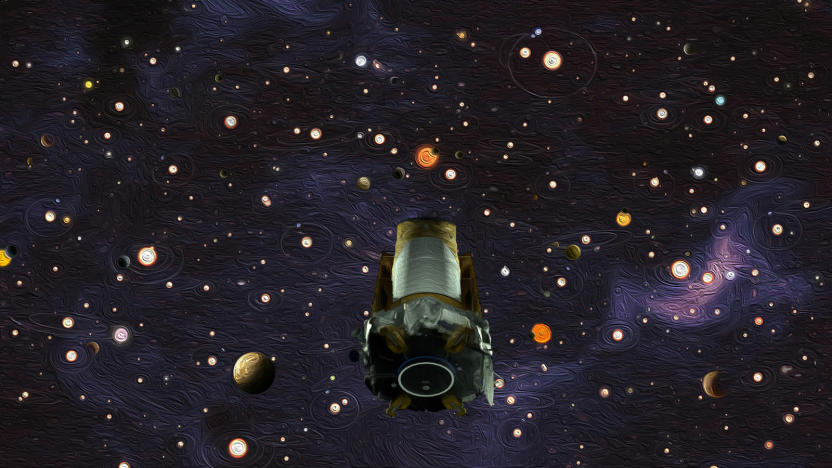
The Kepler space telescope's end has finally come
The time has finally come to say goodbye to Kepler, the spacecraft that exceeded expectations throughout its mission and has so far confirmed more than 2,600 planets outside of our solar system. In March, NASA warned that Kepler's end might be nearing as it was running very low on fuel, and scientists running the spacecraft have put it to sleep multiple times over the past few months in order to preserve what fuel it had left. But even as recently as last month, Kepler demonstrated that it still had enough juice to continue collecting data and launched into its 19th observation campaign. However, Kepler has now run out of fuel and NASA has retired the spacecraft after nine years of observations.
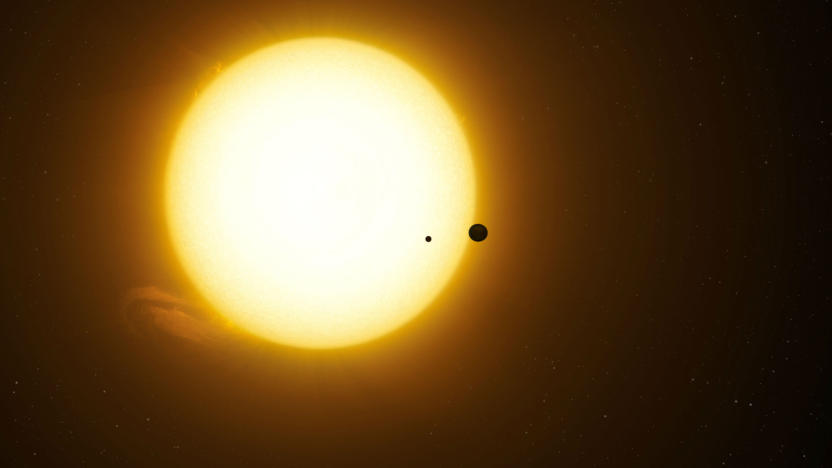
Researchers may have found the first signs of an exomoon
Over the last couple of decades, we've spotted thousands of planets outside of our solar system -- Kepler alone has confirmed more than 2,600. But so far, we've haven't found any exomoons, despite the likelihood of them being prevalent in our galaxy. Because moons tend to be much smaller than their planet counterparts, they're harder to spot, which is probably why we have yet to find any. However, researchers at Columbia University have now found evidence of what might be an exomoon located thousands of light-years from Earth.
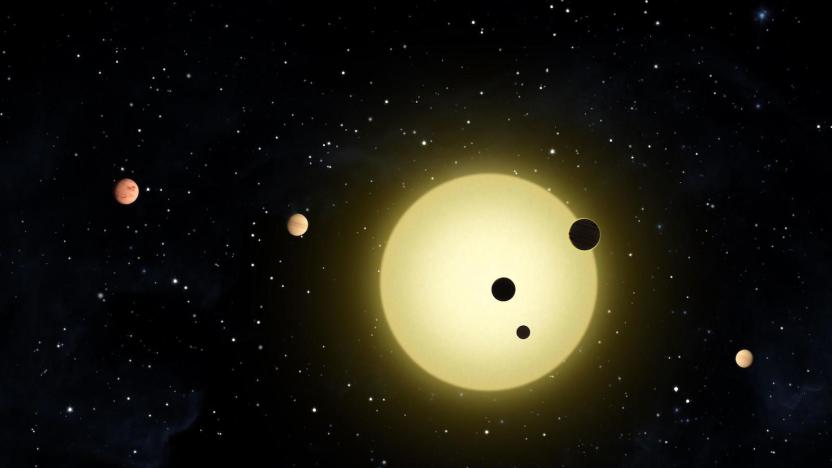
NASA put Kepler back to sleep in hopes it will send data again
Kepler has been running low on fuel for some time, so much so that NASA even put the spacecraft into a sleep mode in July in order to make sure it had enough fuel to transmit data back to Earth. But the planet-hunter has kept chugging -- it even kicked off a new data collection campaign in August. However, Kepler has run into another snag, and NASA has decided to put it back to sleep for the time being.
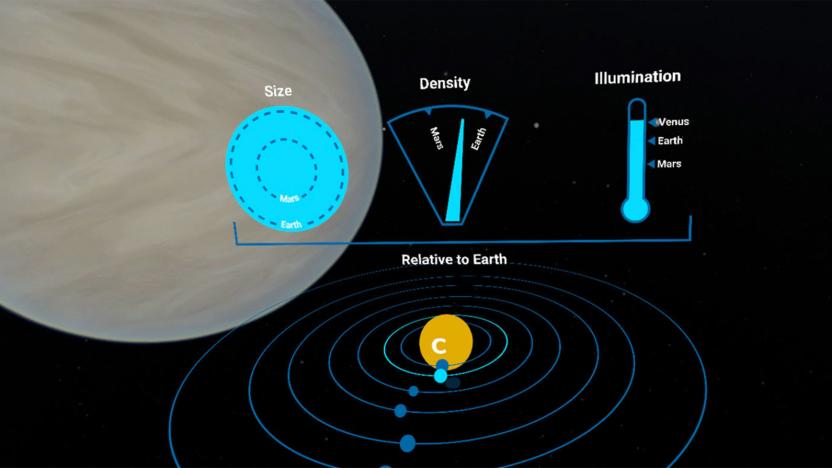
NASA apps take you to space with VR and selfies
NASA's apps tend to be all-business, but it's livening things up this time around -- the administration has released two apps that go beyond dry scientific explanations. The most intriguing is likely Exoplanet Excursions, a VR app for Oculus and HTC Vive headsets. The 3D experience lets you fly through the TRAPPIST-1 system and see artists' renditions of its numerous Earth-sized planets, complete with comparisons to planets around our home star.
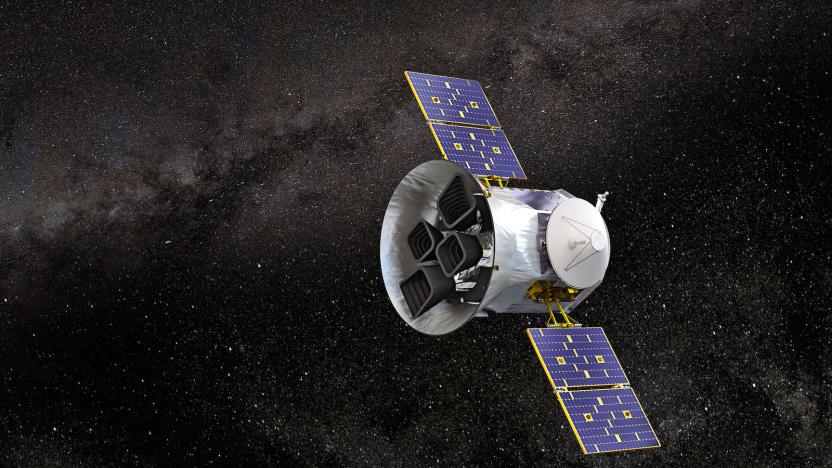
NASA’s TESS spacecraft begins its search for exoplanets
NASA's TESS spacecraft is officially up and running. The agency recently announced that TESS, which stands for Transiting Exoplanet Survey Satellite, started its search for exoplanets -- planets outside of our solar system -- on July 25th. Its first data transmission is scheduled for August. "I'm thrilled that our new planet hunter mission is ready to start scouring our solar system's neighborhood for new worlds," Paul Hertz, director of the Astrophysics Division of NASA's Science Mission Directorate, said in a statement. "Now that we know there are more planets than stars in our universe, I look forward to the strange, fantastic worlds we're bound to discover."

NASA put Kepler to sleep to preserve its remaining fuel
NASA announced today that the Kepler spacecraft, which has been searching for distant Earth-like planets near Sun-like stars, is running very low on fuel. So much so, that it has decided to put Kepler in a sleep mode to preserve fuel over the next few weeks. Back in March, the agency warned that this could happen soon and on Monday, the Kepler team observed a drop in the spacecraft's fuel pressure, indicating a very low fuel level. So for now, Kepler won't conduct any more scientific observations and will instead rest until August 2nd when research it has collected over the last 51 days is scheduled to be downloaded.
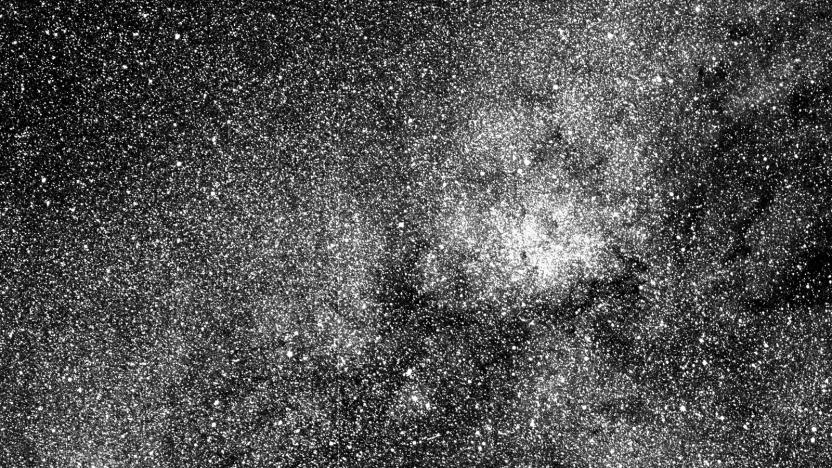
NASA's planet-hunting TESS spacecraft snaps its first photo
TESS, NASA's new exoplanet-hunting spacecraft, has captured its first image ever, giving us a glimpse of what its powerful "eyes" can see. The spacecraft's science team used one of its four cameras to snap a two-second test exposure as part of their preparations now that TESS is only a month away from officially starting its science operations. Their photo shows over 200,000 stars with the southern constellation Centaurus at the center and one of the brightest stars in the night sky, the Beta Centauri, visible on the lower left edge (see the full image below the fold).
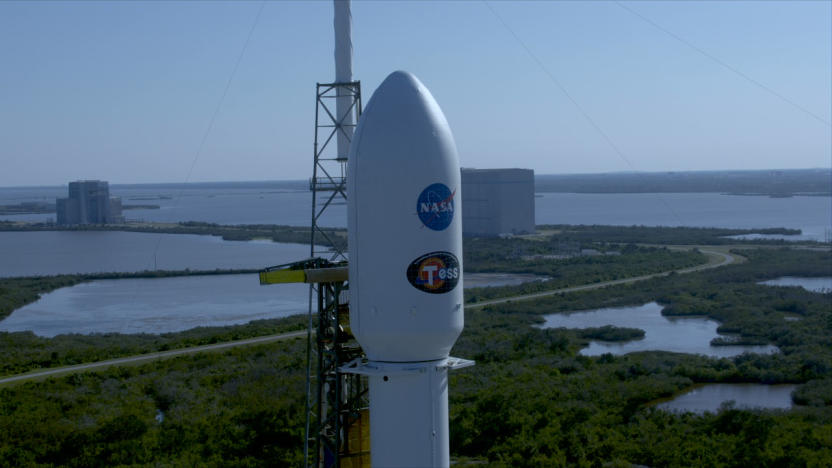
SpaceX launches NASA's planet-finding spacecraft TESS
NASA's new planet-hunting Kepler successor TESS is on its way to orbit. SpaceX has successfully launched the spacecraft after scrubbing its first attempt on Monday to review and analyze its guidance, navigation and control systems. The Falcon 9 rocket carrying TESS took off from Space Launch Complex 40 at Cape Canaveral, and its first stage will attempt to land on the "Of Course I Still Love You" barge in the Atlantic Ocean after its done with its job.

NASA's planet-hunting spacecraft Kepler is near the end of its life
NASA's Kepler spacecraft has been in orbit of the Earth for nine years. In that time, it's well exceeded its original 3.5-year mission and has pinpointed over 4,500 exoplanets and candidates. It's a little bit heartbreaking (though not unexpected), then, that NASA revealed that the spacecraft is on its last legs. Kepler will run out of fuel in the next few months and will soon be dead in space.

NASA hopes to send a probe to Alpha Centauri in 2069
If you thought NASA was playing the long game with its plan to put people on Mars in the 2030s, you haven't seen anything yet. New Scientist has learned that a team at the administration's Jet Propulsion Laboratory has started planning a mission that would send a spacecraft to the Alpha Centauri system in... 2069. Yes, that's 52 years away, and timed around the 100th anniversary of Apollo 11's trip to the Moon. The probe would look for signs of life around the potentially habitable exoplanet Proxima b, giving humanity a much better look than it could get with observation from home.
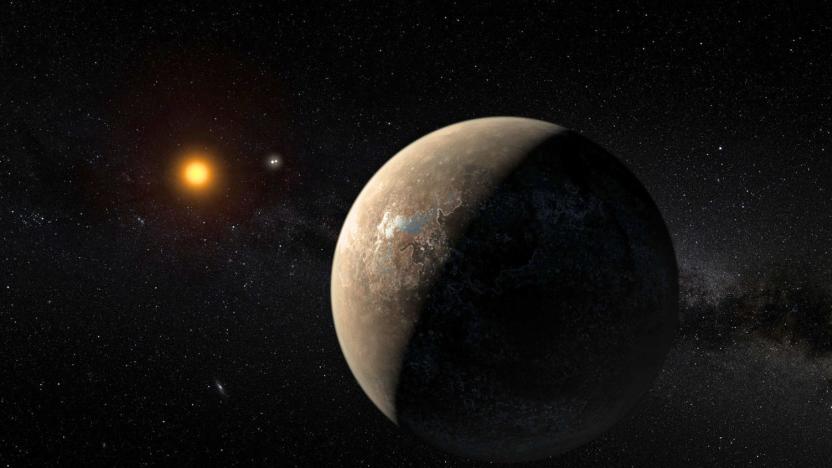
Google researchers use AI to spot distant exoplanets
Hunting for exoplanets is a very data-intensive and time-consuming task. Sifting through piles of data to find subtle signs of distant planets takes quite a lot of work, but researchers at Google have been developing a way to use AI to make the process faster and more effective.
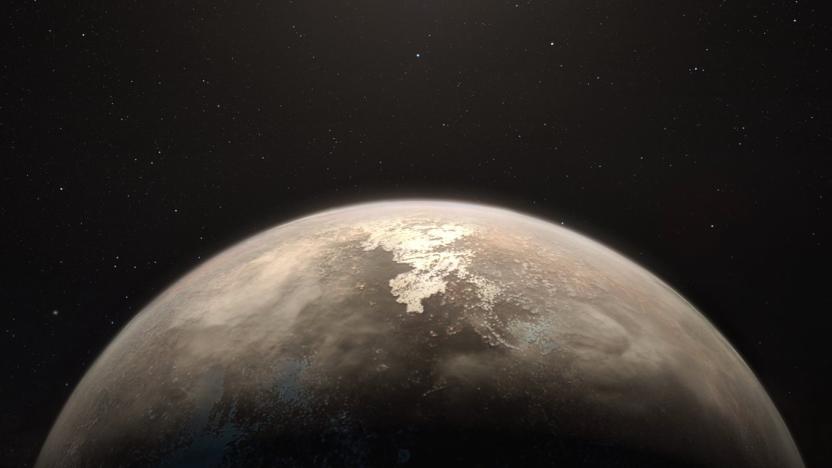
Neighboring exoplanet could be one of the most habitable
A team of astronomers have discovered an Earth-like exoplanet that's only 11 light-years away and is one of the most potentially habitable celestial bodies we've ever come across. Ross 128 b is the second-closest temperate planet -- or planets with temperatures that could support life -- that we know of, with the closest being Proxima b that's merely four light-years away.
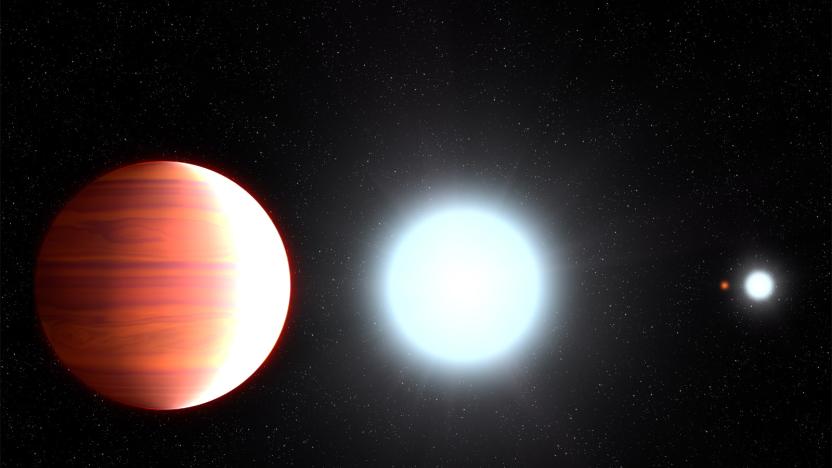
It rains sunscreen on this 'hot Jupiter' exoplanet
Anyone who can conjure up a way to collect resources from Kepler-13Ab in the far future could become a sunscreen magnate. On the heavenly body, one of the hottest Jupiter-sized exoplanets the mission has ever discovered, titanium oxide falls from the skies. The planet is so close to its host star that, like our moon, one side permanently faces Kepler-13A while the other is permanently in darkness. This titanium oxide "snowfall" takes place on the dark side, because winds tend to carry it to colder areas.
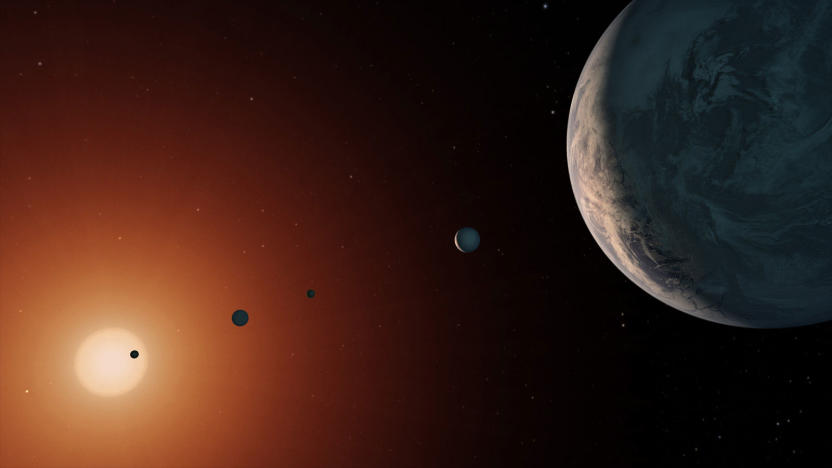
The TRAPPIST-1 star system may be too old for life
We hate to further quash hopes that the TRAPPIST-1 star system can harbor life, but... it's not looking great. Researchers have determined that the dwarf star is between 5.4 billion years old and 9.8 billion years old, or considerably older than the 4.5 billion years of the Solar System. That age isn't necessarily bad, but it increases the likelihood that any life-supporting planets around TRAPPIST-1 lost their atmospheres and water to billions of years of high-energy radiation. And even if their atmospheres were thick enough to block the radiation, there's a possibility that a Venus-like runaway greenhouse gas effect cooked the planets' surfaces.

EVE Online starts putting players to work finding exoplanets
EVE Online has finally launched the Project Discovery mini-game it announced earlier this year, and you know what that means? You can now defend all the hours you spend in the game by telling your mom or SO that you're helping the scientific community find exoplanets. EVE has uploaded real astronomical data from the CoRoT space observatory that you can analyze within the mini-game as a pilot -- once enough players reach the same conclusion on the data's classification, that piece of info will be sent to the University of Geneva for a deeper look.
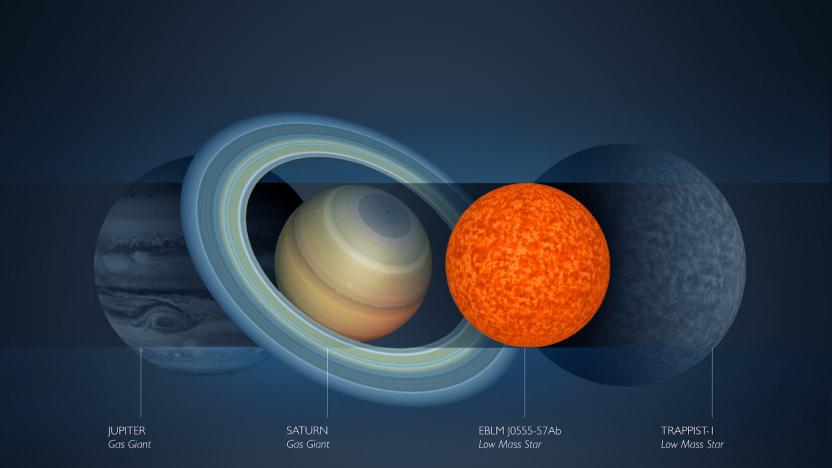
Astronomers spot the smallest star so far
Researchers at the University of Cambridge have found the smallest star ever discovered. It's just slightly bigger than Saturn and while its mass is similar to that of TRAPPIST-1 -- which NASA recently found seven Earth-sized planets rotating around -- its radius is 30 percent smaller.
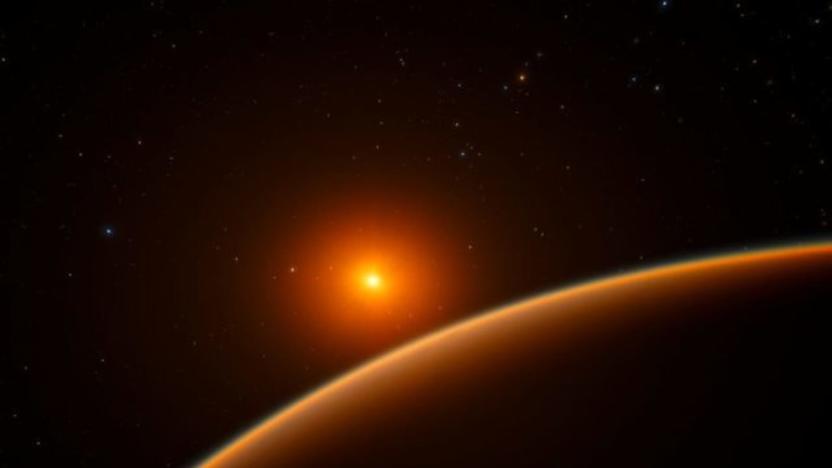
ESA’s search for Earth’s ‘twin’ starts in 2026
The European Space Agency (ESA) announced today that it is officially adopting the PLATO mission. PLATO, which stands for PLAnetary Transits and Oscillations of stars, is a planet-hunting project that will look for Earth twins -- planets just like our own.
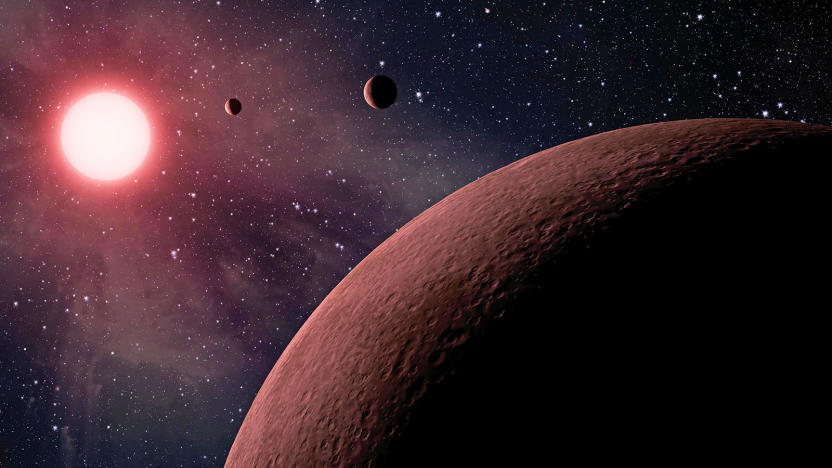
NASA found ten Earth-size planets with conditions ideal for water
Remember when everyone went nuts over the seven Earth-like planets the Spitzer telescope found back in February shortly after Trump was inaugurated? If you're still keen to leave, NASA has released a batch of 219 recently-discovered planet candidates -- including ten near-Earth size that orbit in their star's habitable zone.




